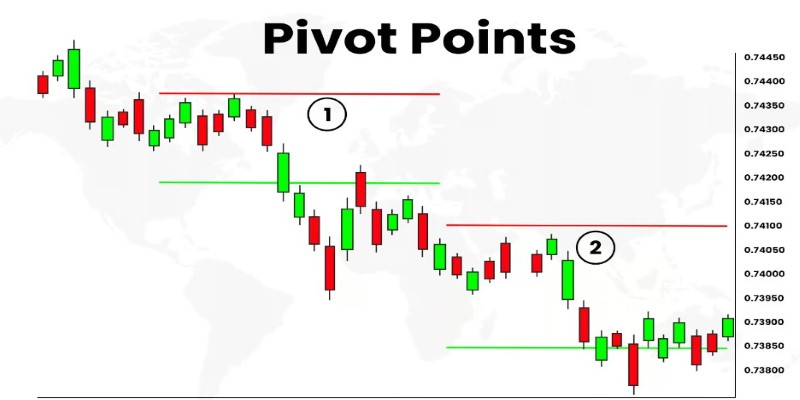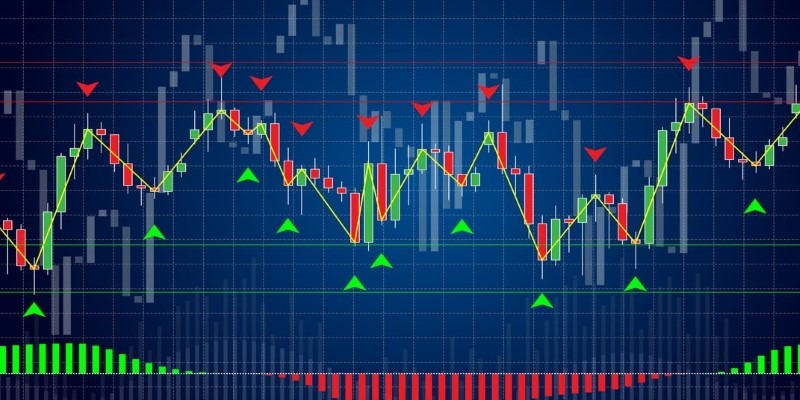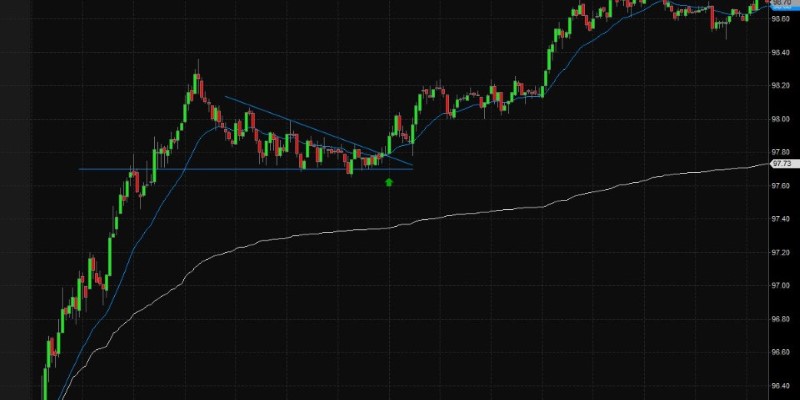Pivot points have been a cornerstone of technical analysis in trading for decades. They provide traders with a straightforward method to identify potential turning points in the market, which are essential for making informed trading decisions.

Whether youre involved in forex, stocks, or commodities, understanding pivot points can significantly enhance your trading strategy. This guide delves into the intricacies of pivot points, how theyre calculated, and the various ways they can be used to your advantage.
What Are Pivot Points?
At its simplest, a pivot point is a technical indicator derived from the average of the high, low, and closing prices from the previous trading day. The resulting pivot point is then used to project potential support and resistance levels for the current trading day. These levels are crucial because they help traders determine where the price of an asset might change direction or consolidate.
Pivot points are especially popular among day traders and scalpers who need quick, reliable methods to gauge market sentiment and potential price movement. However, they are also used in longer-term trading strategies, making them a versatile tool in a traders toolkit.
How Pivot Points Are Calculated?
The central pivot point (PP) is calculated using a simple formula:
PP= (High+Low+Close)/ 3
Once you have the central pivot point, you can calculate the associated support and resistance levels. The first level of support (S1) and resistance (R1) is calculated as follows:
R1=(2PP)-Low S1=(2PP)-High
The second level of support (S2) and resistance (R2) is calculated as:
R2=PP(High-Low) S2= PP-(High-Low)
There are also third levels (S3 and R3) which can be calculated by extending the same logic:
R3=High+2(PPLow) S3=Low2(HighPP)
These additional levels are particularly useful in highly volatile markets where price movements can be more extreme.
Advanced Strategies with Pivot Points
Pivot points, while straightforward, can be leveraged in more sophisticated ways when combined with other trading tools. Here are some advanced strategies that can enhance their effectiveness.
Pivot Point Clusters

Pivot point clusters occur when pivot points from different time framesdaily, weekly, or monthlyalign closely together. These clusters often indicate stronger support or resistance levels, making them key areas for potential trade entries or exits. When the price approaches these clusters, traders can expect significant market reactions.
Combining Pivot Points with Fibonacci Retracements
Using pivot points alongside Fibonacci retracement levels creates a powerful combination. When a pivot point aligns with a key Fibonacci level, such as the 61.8% retracement, it signals a strong potential reversal zone. This confluence of indicators increases the likelihood that the price will react at these levels, making them ideal for placing trades.
Pivot Points with Moving Averages
Incorporating moving averages with pivot points helps identify the trend and strengthens trading decisions. For example, if the price nears a pivot point that coincides with a significant moving average like the 50-period, this level becomes a crucial point for potential reversals. Trading in the direction of the trend, as indicated by the moving average, adds an extra layer of confidence.
Pivot Points and Momentum Indicators
Combining pivot points with momentum indicators like the RSI or MACD can confirm potential reversals. For instance, if the price approaches a pivot point resistance while the RSI indicates overbought conditions, this suggests a higher probability of a price drop. Using momentum indicators alongside pivot points helps validate trade decisions.
Pivot Points with Trend Lines
Using trend lines in conjunction with pivot points can pinpoint significant levels where the market might react. When a pivot point intersects with a trend line, it often marks a strong support or resistance level. This intersection can guide traders on where to enter or exit trades, especially in volatile markets.
Pivot Points in Multiple Time Frame Analysis

Analyzing pivot points across multiple time frames, such as daily and weekly, provides a broader market perspective. While daily pivot points offer short-term signals, weekly or monthly pivot points can highlight more significant support or resistance areas. This multi-timeframe approach helps align trades with the overall market trend.
Common Mistakes to Avoid
While pivot points are a valuable tool, they are not infallible. One common mistake traders make is relying solely on pivot points without considering the broader market context. In times of high volatility or significant news events, pivot points may lose their effectiveness, as market conditions can rapidly change. Additionally, traders often overlook the importance of adjusting pivot points based on different time frames. While daily pivot points are widely used, incorporating weekly or monthly pivot points can offer a more accurate perspective, particularly for longer-term trades.
Another frequent error is using pivot points in isolation. Relying solely on them can lead to false signals. Pivot points should be integrated with other forms of analysis, such as technical indicators, fundamental analysis, or market sentiment. This comprehensive approach allows traders to make more informed decisions and reduces the risk of misinterpreting market movements, ultimately leading to more successful trading outcomes.
Conclusion
Pivot points are a vital tool in the traders arsenal, offering a simple yet effective way to predict market movements and identify key levels of support and resistance. Whether youre day trading in the forex market or swing trading stocks, pivot points provide a reliable framework to guide your trading decisions.
This guide has provided a comprehensive overview of what pivot points are, how they are calculated, and how they can be applied across different markets. As with any trading tool, the key to mastering pivot points lies in practice and continuous learning. By integrating pivot points into your trading strategy and combining them with other forms of analysis, you can enhance your ability to navigate the markets and make more informed trading decisions.







